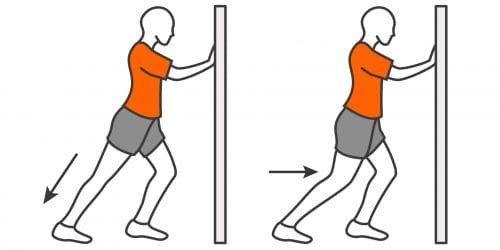- Smart Stride
- Posts
- Beating Shin Splints
Beating Shin Splints
The biomechanics, prevention strategies, and recovery tools every runner should know
Today’s issue is all about shin splints or, in medical terms, Medial Tibial Stress Syndrome (MTSS). It’s one of the most common running-related injuries and is often linked to training errors, footwear, and biomechanics.
Research has shown that factors like a higher BMI, speed of pronation, and excessive overpronation all increase the risk of developing shin splints. Combine that with sudden mileage spikes or poor recovery, and the tibia and surrounding tissues can’t keep up with the repetitive stress.
But don’t worry, there are plenty of strategies you can use to prevent and manage shin splints.
Biomechanical risk factors for Shin Splints
One of the main culprits lies in your running gait. A few patterns that often lead to shin splints:
Overpronation – Rolling with your foot inwards creates excessive stress on the tibial muscles
Overstriding – landing with your foot too far ahead of your body increases impact forces.
Excessive heel striking – puts repeated stress on the shin bone and surrounding muscles.
Low cadence – fewer steps per minute often means bigger steps, amplifying loading.
Weak calf–shin balance – when the tibialis anterior (muscle along the shin) can’t keep up with calf strength, it leads to overload.
Stability shoes
Research has shown that foot orthotics can help reduce excessive pronation. By supporting the arch and slowing down the inward roll of the foot, they decrease stress on the tibia and surrounding muscles, ultimately lowering the risk of injuries like shin splints (MTSS).
For many runners, anti-pronation shoes (often labeled stability shoes) can provide a similar benefit without the need for custom inserts. These shoes typically include firmer foam or posting on the inside edge of the midsole, which helps guide the foot into a more neutral position during loading.
That doesn’t mean every runner needs them, but for those with fast or excessive pronation, stability footwear can be a helpful tool in reducing injury risk and improving comfort during training.
My favourite anti-pronation shoes right now are the:
Saucony Guide 18
Asics Gel Kayano 32
New Balance 860v14
Stretching for relief
Tight calves often aggravate shin pain. Here are two simple stretches to release tension:
Gastrocnemius stretch: Stand facing a wall, one leg back, heel flat, knee straight. Lean forward until you feel a stretch in your upper calf.
Soleus stretch: Same setup, but with your back knee bent slightly. This targets the deeper soleus muscle lower in the calf.
Hold both stretches for 30–45 seconds, repeat 2–3 times per side.
These stretches will also help improve ankle range of motion.

Left: Gastronemius stretch; Right: Soleus stretch
Strength to protect your shins
To prevent shin splints, you need to strengthen both sides of the lower leg:
Seated calf raises – build soleus strength (vital for mid-to-late stance in running).
Standing calf raises – target the gastrocnemius.
Tibial raises – lean against a wall, lift your toes toward your shin. This strengthens the front side and balances calf strength.
Do these 2–3 times per week to build resilience.
Recovery Tools
Self-massage & massage guns: While not a cure, they can reduce tightness and increase short-term blood flow, making legs feel looser before or after runs. Think of them as a tool, not a fix.
Foam rolling: Target the calves and surrounding fascia. Rolling helps with circulation, decreases stiffness, and can improve tissue quality over time when done consistently.
Compression socks: These help flush out metabolic waste, improve circulation, and can speed up recovery. Plus, the snug fit reduces calf vibration during running, lowering the strain on the shin bone itself.
Daily shin splint prevention routine (10–15 min)
If you are suffering from shin splints, here is a simple routine that will help reduce pain and get’s you back to running.
1. Stretching (4 min total)
Gastrocnemius stretch – 30 sec per side × 2 = 2 min
Soleus stretch – 30 sec per side × 2 = 2 min
2. Foam rolling (4–5 min total)
Calves – 1 min per side = 2 min
Peroneals (outer lower leg) – 1 min per side = 2 min
3. Strengthening (5–6 min total)
Seated calf raises – 2 sets of 12–15 reps = ~2 min
Standing calf raises – 2 sets of 12–15 reps = ~2 min
Tibial raises (toe lifts against wall) – 2 sets of 12–15 reps = ~2 min
Introducing: The Shoe Hotline 👟
I’m excited to share something new: the Shoe Hotline.
It’s a quick Q&A service where you can ask me anything about running shoes, whether you’re dealing with shin splints, wondering about rotations, or just want to know which shoe fits your goals.
Takeaway
Shin splints, or MTSS, are frustrating, but with smart gait adjustments, proper stretching, strength training, and the right recovery tools, you can keep them from messing with your runs.
And remember: sometimes the right pair of shoes makes all the difference — and now you’ve got the Shoe Hotline to help.
Thank you for reading,
Tim 👟